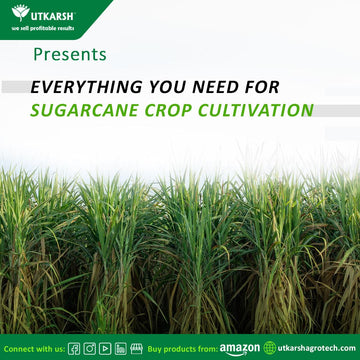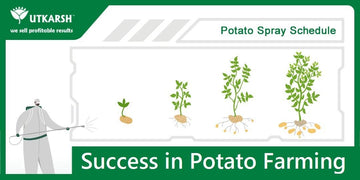
WHAT ARE THE FACTORS AFFECTING THE GROUNDNUT CULTIVATION?
“A man cannot live by bread alone; he must have peanut butter.”
Groundnuts, also known as peanuts are an important plant cultivation. Being a kharif crop, it is sown from May to June or sown as late as August or early September, depending on the rainfalls.
Groundnut is an important oilseeds crop in India that acquires huge portion of production and productivity. Just like other crops, it has a good number of requirements too and similarly, growing a groundnut opens in different folds. Thus, in this blog we will look into various factors that affects the success of a groundnut cultivation.
1. CLIMATE AND SOIL
The groundnuts are precisely grown in 25°C to 35°C of temperatures in day time and cooler temperatures at night throughout the growing period. They are sensitive to photoperiod and must be taken care of. And even though they are drought tolerant, they bloom adequately in good water content of the soil and a good amount of rainfall just like many other plants. Thus, apart from climate, soil is also something that is to be taken care of.
These kharif crops usually require soil that is well drained, rich with calcium and an addition of organic matter. The desirable Ph is 6.0 to 6.5.
But this is not it. Land and layout of farming must be prepared well in advance so that the yield can be fruitful. This begins with removing the crop residues and harbour pests that cause diseases. This helps in eliminating early growth of weeds and also helps in breaking the soil- which must then be refined with harrowing. If in case, the crops are to be grown on ridges, the ridges must be made flat-topped and just at the time of sowing. A light rolling after the ridges are made, would actually help in forming a proper seed-bed.
Talking about the layout preparation, if your plot is four rows of 4m length, then a gap of 30cm between rows and 10cm between plants is advisable. Seeds and fertilizers for each plant must be prepared before hand as well.
2. SEED

Once your land is ready to be cultivated, the next factor to be looked upon is the seeds of the plants. First and foremost, thing to be considered is that the seeds must be propagated and must have a seed rate of 80-100kilograms per 1 acre of land. The suggested sowing time is between June-July and December-January.
Groundnut pots to be sown must be hand-shelled and well sorted, so that improper seeds are eliminated in advance. The next thing is to treat the seeds with insecticide or fungicide mixture to control seed damage. You can also treat them with Carbendazim, thiram, Bavistin of 2kg every 24 hours or with talc formulation of Utkarsh Trichoz (4kg/seed) and Sudoz (10kg/seed)
The next factor to be looked upon is the spacing wherein small ones are spaced at 60cm between rows which in turn provides a space for a plant population of 1,67,000 per hectare and the large ones must be spaced at a distance of 75cm that may give a plant population of 89,000 per hectare. However, it all depends on a proper irrigation system at the end.
3. WATER AND PLANT MANAGEMENT


Everything comes with a rate, more than that and less than that are both equally unsuitable. Similarly, it is optimum to have 11-12 irrigation sessions for summer groundnuts. One irrigation after 0-15 days another after 30 days, etc. it is also advised to withstand the irrigation for a while after the plant is established as it is seen that this creates stress and heavy flowering rushes in. Different stages of a plant have different water needs too for groundnut cultivation. For example – flowering, pegging and pod development phases essentially requires adequate soil moisture.
Apart from irrigation, there are other factors to be managed as well and they are –
- Inter cropping
It is advisable to grow intercrops like cowpea, red gram, black gram, sunflower, gingelly, or other pulses after some rows of groundnuts whenever pests are seen.
- Earthing up
The soil should not be disturbed after sowing for atleast 45 days as it may affect pod formation. Thus, the soil must have a medium under the soil for pegging and pod development. Earthing can be done after second hand weeding or 40 days after sowing.
- Weeding
Groundnut cannot compete with weeds and thus it is advisable to remove the weeds at an early stage as once the pegging begins, soil disturbance must be strictly avoided. These weeds can be pulled off with hands or the soil can also be treated with Fluchloralin at 0.8 l/acre before sowing and Imazethapyr @ 300 ml/acre after 20-30 days of sowing depending on the weed density as a post emergence spray. Apart from these, it is suggested that crop-rotation may reduce certain species of weeds.
Crop-rotation
A groundnut versatility fits into many farming systems such as cereals and root crops. They may do well immediately after a grass fallow or well-cultivated crops and is also suitable on a virgin land. However, for groundnut cultivation, groundnut rotation is not advisable as it causes pests and diseases.
4. NUTRIENT REQUIREMENTS
Apart from the management, something that is really important for a plant cultivation is the nutrient required by them or in other words, the manures and fertilizers provided to them. In groundnut groundnut cultivation/farming, 8 t/acre of well decomposed manure is required fully at-least before 1 month of sowing. It is not only good for the development of plant but also for the soil structure.
Moreover, groundnuts have an extensive root system which allows them to explore a large portion of the soil and thus they may benefit from the manure residues of the preceding crops. They can be cultivated with a balanced fertilizer (N.P.K). Cases where the Ph is not suitable enough, you can add calcium to those slightly acidic soils. In boron deficient soils, borax can be applied as basal dressing.
Apart from manuring and fertilization, rhizobium culture can also benefit the plants. Once the seeds are treated in this form, the rhizobia bacteria try to enter the plant through root hair and wherein the plant starts developing a root nodule close to its entry. As this relationship is established, the plant provides the rhizobia with energy and in return, the rhizobia convert the atmospheric nitrogen into a form that the plants can use and thus both of it benefits from the same.
5. HARVESTING AND YIELD

Harvesting is the most important factor as it gives us the final result of the yield of our groundnut cultivation. The timing makes all the difference. In groundnut cultivation, the flowering is indeterminate and it becomes important to identify between the various mature and immature pods to be harvested at the end of the pod cycle. Matured pods are identified by dark markings of the pod shells and the plump kernels. Another reason why timing is important because, if the harvesting is late, the non-dormant varieties will sprout in the field and hence result in yield-loss.
These harvested plants must then be staked in the field for a few days before stripping the pods in order to let them dry in the sun and natural air. The drying must go on until the moisture of the plant is reduced to 6%-8%.
6. A PROPER SCHEDULE
Apart from the factors mentioned above, the most important factor is the timing. Following a proper schedule can helps boast the groundnut cultivation the most. Utkarsh provides a schedule which can help to grow the groundnut cultivation up to 40%. Have a look at it:
Spray schedule:


Fertigation schedule:


There are other hurdles too while cultivating groundnuts, such as pests’ control, diseases, etc. but these were some of the primary factors affecting a fruitful yield. A fruit is enjoyed by all, but the tedious process of growing it is only in a few hands which involves not only the farmers but also the agricultural organisations like Utkarsh that unleashes the various solutions by not only providing a platform for good quality products but also a platform to gain knowledge about different cultivations.
To know more about profitable rice farming, Watch our webinar recording of Profitable Groundnut Farming:
Simply order the number of 1-Acre-Kits as per the size of your farm and get the entire range of requirements covered in it.
Simply select the kit, that’s it. => Lesser Cost & Higher Profitability.
For Successful groundnut farming you can shop our Utkarsh Kit for groundnut cultivation.
To shop a Groundnut Farming kit Click on this : https://utkarshagro.com/product-category/kits/



Following the above Fertigation and Spray schedule will definitely help you increase the Groundnut Cultivation Production by great quantity.
May you have the best yield ever! Feel free to contact Utkarsh for any doubts and advice.
If you have any queries, feel free to reach out to us on 919824133044, +919924864422, +919824300544
Landline: 02621-255972
Visit our Website: https://utkarshagro.com/
Email ID: rd@utkarshagro.com
Stay connected with us to learn more tips and tricks. All you have to do is follow us here:
Chat: wa.me/919824133044
Facebook: https://www.facebook.com/utkarshagrochem/
Instagram: https://www.instagram.com/utkarshagrochem/
Twitter: https://twitter.com/UAgrochem
LinkedIn: https://www.linkedin.com/company/utkarsh-agrochem-pvt-ltd/
YouTube: https://www.youtube.com/utkarshagrochem
Amazon Brand Store: https://bit.ly/UtkarshAmazon
Once again, all the products mentioned in this blog can be found on Amazon as well as the website of Utkarsh. Also, the method of application and the required dose can be easily found on our Website – Utkarshagro.com/shop.
Written by:
Beepasha Madhvani
Affiliate Writer with Monkey Ads





